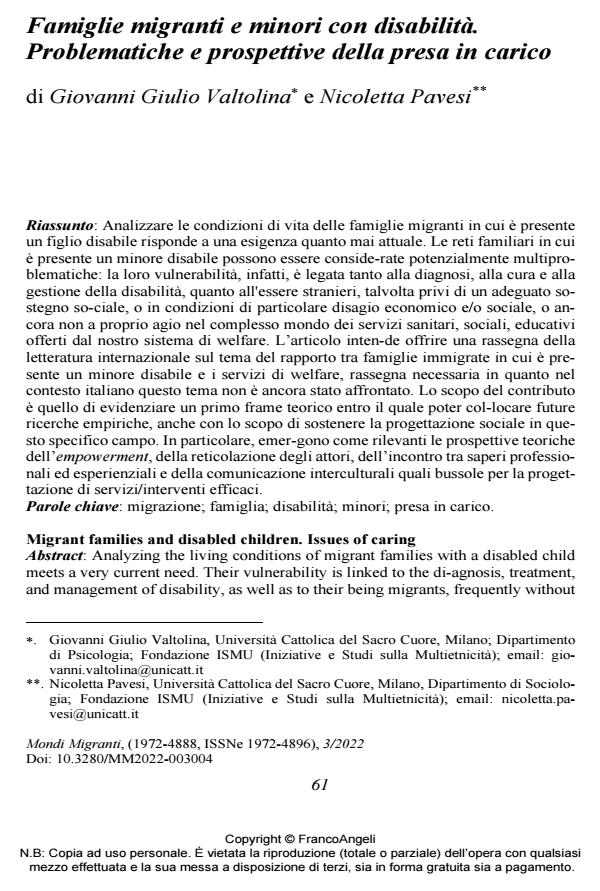Migrant families and disabled children. Issues of caring
Journal title MONDI MIGRANTI
Author/s Giovanni Giulio Valtolina, Nicoletta Pavesi
Publishing Year 2022 Issue 2022/3
Language Italian Pages 15 P. 61-75 File size 220 KB
DOI 10.3280/MM2022-003004
DOI is like a bar code for intellectual property: to have more infomation
click here
Below, you can see the article first page
If you want to buy this article in PDF format, you can do it, following the instructions to buy download credits

FrancoAngeli is member of Publishers International Linking Association, Inc (PILA), a not-for-profit association which run the CrossRef service enabling links to and from online scholarly content.
Analyzing the living conditions of migrant families with a disabled child meets a very current need. Their vulnerability is linked to the diagnosis, treatment, and management of disability, as well as to their being migrants, frequently without social support, or in conditions of economic and/or social hardship, or not comfortable in the complex world of health, educational, and social services, offered by the Italian welfare system.
Keywords: migration; family; children; disability; caring.
Giovanni Giulio Valtolina, Nicoletta Pavesi, Famiglie migranti e minori con disabilità. Problematiche e prospettive della presa in carico in "MONDI MIGRANTI" 3/2022, pp 61-75, DOI: 10.3280/MM2022-003004